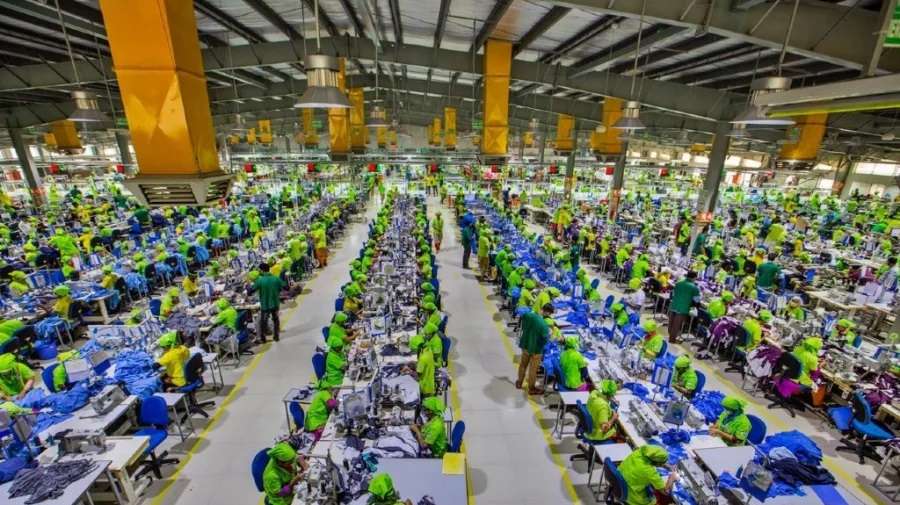"Garments, traditionally made from animal furs, are increasingly being replaced by synthetic materials, causing large scale deforestation. For instance, a wool sweater, earlier made from animal hair, is now being made from cotton or nylon yarn. Coats are being stuffed with goose down or synthetic insulation depending on the quality of the product. Garments are often made from cotton and the consumer usually is not aware of the specific growing conditions or agricultural practices that lead to their garments. Extremely popular in the 1860s, the silk industry was plagued by a disease that struck silkworms. It was then that the famed scientist Louis Pasteur and Count Hilaire de Chardonnet invented ‘imitation silk’ using cellulose from wood pulp created a fabric now known as rayon."
 Garments, traditionally made from animal furs, are increasingly being replaced by synthetic materials, causing large scale deforestation. For instance, a wool sweater, earlier made from animal hair, is now being made from cotton or nylon yarn. Coats are being stuffed with goose down or synthetic insulation depending on the quality of the product. Garments are often made from cotton and the consumer usually is not aware of the specific growing conditions or agricultural practices that lead to their garments. Extremely popular in the 1860s, the silk industry was plagued by a disease that struck silkworms. It was then that the famed scientist Louis Pasteur and Count Hilaire de Chardonnet invented ‘imitation silk’ using cellulose from wood pulp created a fabric now known as rayon.
Garments, traditionally made from animal furs, are increasingly being replaced by synthetic materials, causing large scale deforestation. For instance, a wool sweater, earlier made from animal hair, is now being made from cotton or nylon yarn. Coats are being stuffed with goose down or synthetic insulation depending on the quality of the product. Garments are often made from cotton and the consumer usually is not aware of the specific growing conditions or agricultural practices that lead to their garments. Extremely popular in the 1860s, the silk industry was plagued by a disease that struck silkworms. It was then that the famed scientist Louis Pasteur and Count Hilaire de Chardonnet invented ‘imitation silk’ using cellulose from wood pulp created a fabric now known as rayon.
Rayon’s forest connection…
Initially rayon was found to be unsuitable for most clothing and was instead used in other products. However, in 1955, new rayon strong enough for clothes - high wet modulus (HWM) was invented. The result is today rayon is extremely popular. According to TextileWorld, 5.2 million tons of rayon and related cellulose based fabrics were produced in 2015.
1955, new rayon strong enough for clothes - high wet modulus (HWM) was invented. The result is today rayon is extremely popular. According to TextileWorld, 5.2 million tons of rayon and related cellulose based fabrics were produced in 2015.
As per non-profit Rainforest Action Network’s Out of Fashion campaign, 120 million trees are cut down annually to make our clothes. And Nicole Rycroft, founder of Canopy, a sustainable clothing nonprofit, quoted in The Guardian said that 30 per cent of rayon and viscose (created with a similar process) in clothing is sourced from wood pulp coming from ‘endangered and ancient forests’.
Limited success in conservation
Organisations such as Rainforest Action Network (RAN) and Canopy have pressurised fashion companies to change their deforestation practices with mixed results. In 2010, Canada, Indonesia and Brazil supplied about 60 per cent of China’s pulp import, 75 per cent of which was used to create viscose fabrics. According to The Guardian, 5 per cent of the fabric industry is made up of forest based fabrics like rayon and viscose. It’s projected that demand for these fabrics may grow as fast as 9 per cent annually, which could lead to even more deforestation the world over.
These companies met with few results. Canopy worked with H&M to stop using cellulose from unsustainable sources and RAN’s policies were adopted by Ralph Lauren, Victoria’s Secret and Abercrombie & Fitch. Some companies ignored the pressure, continuing to support deforestation in their supply chains, specifically mentioning Forever 21, Under Armour, Foot Locker, Prada Group and Michael Kors.
Hazardous to health
According to Paul Blanc, author of ‘Fake Silk: The Lethal History of Viscose Rayon’ about 30 per cent of factory workers investigated showed serious signs of poisoning. Studies reveal the direct effect of specific chemicals on human body are difficult to determine and controlled settings are impossible. It’s not hard to imagine that clothing companies hide the darker aspects of their trade. When confronted with the facts that their clothes cause deforestation, the fashion industry claimed ignorance, much like they have claimed ignorance of sweatshops.
Rayon is used to produce tires, cellophane and synthetic sponges also. It’s nearly impossible to live a normal modern life and never use any of these products. What can be done however is sign petitions like the one RAN created. Purposefully buy from companies like Patagonia that put factory workers and the environment as important from the beginning without being pressured from the outside.












